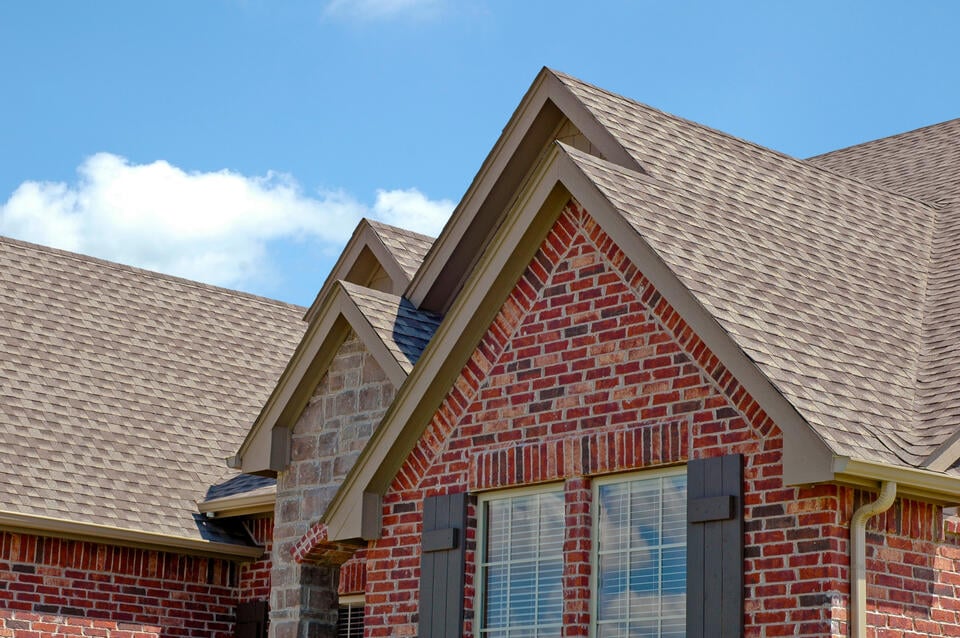
Understanding the Key Parts of a Roof and Their Functions
Your roof is one of the most critical structures in your home, yet it’s often overlooked—until there’s a problem. A well-functioning roof doesn’t just protect you from the elements; it also plays a key role in your home’s overall structural integrity and energy efficiency.
Understanding the key parts of a roof can help you spot potential issues, communicate effectively with contractors, and even prepare for maintenance or repairs. This guide will break down your roof’s anatomy, share how each component works, and explain why they’re important, including:
- Understanding your roofing system
- 12 parts of a roof
🏠 Understanding Your Roofing System

A roof structure is made up of several key components, each playing an important role in protecting your home and ensuring durability. The foundation of any roof is the roof structure itself, which supports the entire roofing system and provides stability. On top of this sits the roof covering, the outermost, visible layer designed to shield your home from weather elements like rain, snow, and sunlight. Equally important are the drainage components, which direct water away from your home to prevent potential water damage. Lastly, roofs often feature decorative and functional additions such as chimneys, skylights, and dormers, which not only add character to your home but also enhance functionality. Together, these elements work to create a roof that is both practical and aesthetically pleasing.
Benefits of Understanding the Different Parts of Your Roof as a Homeowner
- Spot Problems Early: Understanding your roof allows you to identify issues like leaks, missing shingles, or structural damage before they escalate, helping you avoid expensive repairs down the line.
- Make Informed Choices: Knowing the parts of your roof helps you select the best materials for upgrades, replacements, or maintenance, ensuring your roof lasts longer and performs better.
- Communicate Effectively with Contractors: A basic understanding of roofing terms and structure enables you to clearly explain your needs and concerns to contractors, reducing misunderstandings and ensuring better results.
- Protect Your Investment: By understanding how your roof works, you can take steps to maintain it properly, protect your home, and ultimately preserve the value of your property.
🏠 12 Parts of a Roof

Understanding the 12 parts of a roof is essential for ensuring proper construction, maintenance, and durability of your home. Each component plays a critical role in protecting your property from weather and structural damage.
1. Rafters
Rafters are the sloped beams that form the backbone of a roof’s structure. They run from the ridge board at the peak of the roof down to the eaves, creating a triangular framework. Made from wood or metal, rafters not only shape the roof but also evenly distribute its weight to the walls of the building. They are critical to the stability of the roof and are often used in traditional roofing designs or customized structures where prefabricated trusses aren’t practical. Rafters also provide the base for attaching decking and insulation, ensuring a secure and sturdy structure.
2. Trusses
Trusses are pre-designed triangular structures that serve as the primary load bearers for a roof. Unlike rafters, which are traditionally cut and installed on-site, trusses are pre-fabricated and delivered as complete units. The triangular design of trusses ensures even weight distribution, allowing them to support heavier roofing materials like tiles or slate. Made from wood or steel, they offer versatility for both residential and commercial projects. In addition to providing structural integrity, trusses also reduce construction time and can support larger spans without needing additional internal support.
3. Decking (or Sheathing)
Decking, also known as sheathing, is the flat surface that forms the foundation of the roof. Typically made from plywood or oriented strand board (OSB), it attaches directly to the rafters or trusses. Decking is essential for supporting roofing materials like shingles, tiles, or metal panels and acts as a bridge between the structural framework and the weatherproof outer layer. In addition to providing a stable surface, decking helps maintain the roof’s shape and stability, ensuring it can withstand external forces like wind and snow. For added durability, decking can be treated with waterproofing coatings or moisture-resistant materials.
4. Roof Covering
The roof covering is the topmost layer of the roof, designed to protect the underlying structure from weather elements like rain, snow, and UV rays. It also contributes to the overall aesthetic of the building. Here are the most common types:
- Asphalt Shingles: Affordable, durable, and versatile, asphalt shingles are the most popular choice for residential roofs. They come in a variety of colors and textures, making them suitable for many architectural styles. Their lifespan typically ranges from 20 to 30 years.
- Metal Roofs: Known for their longevity and energy efficiency, metal roofs can last more than 40 years with minimal maintenance. They reflect sunlight, reducing cooling costs, and are available in options like steel, aluminum, or copper.
- Tiles or Slate: Ideal for premium homes, tiles and slate offer unmatched durability and an upscale appearance. Clay tiles withstand extreme weather, while slate is a natural stone material that can last over a century. Both options require strong structural support due to their weight.
5. Flashing
Flashing is a thin, durable material (commonly metal) installed around roof openings, edges, and joints to prevent water infiltration. It’s especially crucial in areas like chimneys, skylights, valleys, and vents where leaks are more likely to occur. Flashing works by channeling water away from these vulnerable spots and into the gutters. Proper installation and maintenance of flashing are essential for keeping the roof waterproof and protecting the building from moisture damage or structural decay.

6. Insulation
Insulation is the material installed beneath the roof to regulate indoor temperatures and improve energy efficiency. By keeping heat out during summer and trapping it in during winter, insulation reduces the need for excessive heating or cooling, lowering energy bills. Common materials include fiberglass batts, rigid foam boards, or spray foam. Proper roof insulation also minimizes noise from rain or hail and prevents condensation, which could otherwise lead to mold and mildew growth.
7. Ventilation
Roof ventilation is vital for maintaining the health and longevity of the roof. It allows excess heat and moisture to escape from the attic or roof space, preventing problems like mold, rot, and ice dams during winter. Common types of vents include ridge vents (installed along the peak), soffit vents (under the eaves), and attic fans. Proper ventilation also helps regulate indoor temperatures, improving comfort and energy efficiency, especially in hot climates.
8. Gutters
Gutters are narrow channels installed along the edges of the roof to collect rainwater and direct it away from the building. They play a crucial role in protecting the foundation, walls, and landscaping from water damage. Gutters come in various materials, including aluminum, vinyl, and steel, and can be fitted with leaf guards to prevent clogging. Regular cleaning and maintenance ensure that gutters function efficiently, especially during heavy rainfall.
9. Downspouts
Downspouts are vertical conduits connected to gutters, designed to channel collected water to the ground and away from the building’s foundation. By preventing water from pooling near the base of the structure, downspouts protect against erosion, basement flooding, and foundation damage. They can be extended further away from the building through diverters or splash blocks for added protection. Properly functioning downspouts are essential for maintaining the integrity of your home.
10. Chimneys
Chimneys are structures that vent smoke, gases, or steam from fireplaces, stoves, or boilers to the outside. They are designed to provide proper airflow while ensuring safety by keeping harmful fumes out of the living space. Chimneys must be sealed and flashed correctly to prevent leaks where they meet the roof. Regular inspections and cleaning are necessary to avoid blockages or structural damage that could compromise their function.
11. Skylights
Skylights are windows installed on the roof to bring natural light into the home. They are a popular choice for brightening dark spaces like attics, kitchens, or bathrooms. While skylights enhance aesthetics and reduce the need for artificial lighting, they must be properly installed with flashing and waterproof seals to prevent leaks. Modern skylights often include energy-efficient glass and ventilation options to improve the home’s comfort and efficiency.
12. Dormers
Dormers are roof structures that project outward, creating additional headroom and usable space in the interior. They are commonly found in attic conversions or homes with steeply sloped roofs. Dormers add architectural character to a building while increasing natural light and ventilation. They come in various styles, such as gable, shed, or hip dormers, each designed to complement different roof types. Proper construction and sealing are essential to ensure they remain weatherproof and structurally sound.
🙌 Protect Your Home with Expert Repairs, Maintenance, and Replacements
At Better Way Roofing, we understand that every component of your roof plays a vital role in protecting your home and ensuring its longevity. Our team of skilled professionals is dedicated to providing top-quality materials, expert craftsmanship, and a commitment to excellence in every project we undertake. Whether you need repairs, maintenance, or a complete roof replacement, you can trust us to deliver solutions tailored to your specific needs. Don’t leave the safety and durability of your roof to chance—partner with a team that prioritizes your peace of mind. Contact Better Way Roofing today for a free consultation and see why we’re the trusted choice for homeowners in your community!
